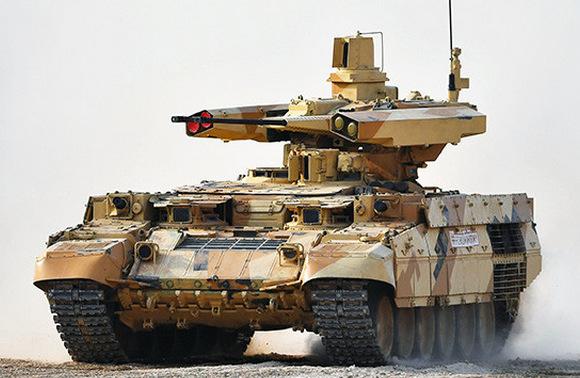One thing must be made clear: wars, even those considered "lightning", need their times. But in an environment permeated by the culture of scapegoat it was quite normal to torpedo General Serhiy Kisel, who would have been "suspended for failing to conquer Karkhiv", and Vice Admiral Igor Osipov, who would have been "fired following the sinking of the cruiser Moscow". Probably the Russian Chief of Defense, Gen. Valeriy Gerasimov, would no longer have Putin's total trust but at the moment it seems to be still in his place.
The most critical phase of the conflict in Ukraine could perhaps have ended in two or three days only if President Zelensky had fled and the government had collapsed. At that point we would have witnessed the beginning of the Russian occupation with the very probable start of the Ukrainian resistance in the form of guerrillas.
But all this did not happen and the situation on the ground is the one that we have all come to know to a little bit: the unsuccessful attempt to siege Kiev and the penetration into the east with repeated attacks on Kharkiv with a negative outcome as well. to the south, the situation, which saw the Russian forces from Crimea and the pro-Russian forces of Donbass occupy almost the entire coastal strip with the exception of Odessa, thus closing Ukraine in a sort of terrestrial enclave, seems to have crystallized from some week.
Is it the fault of the Russian generals who planned the operation badly and conducted the operation worse?
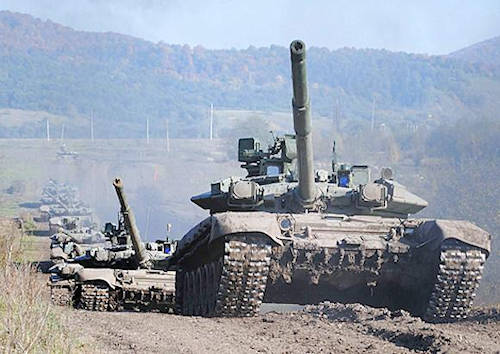
The purpose of the attack but also the way in which Ukraine was invaded on February 24th, gave birth to more or less valid discussions and theories between old and new geo-strategists (real or presumed such).
In our opinion, the Russian penetration was too broad a front (about 1.500 km) not due to an operational error on the part of the Russian military decision makers (it would have been unforgivable) but due to a very precise and risky strategic choice: to induce panic. in the population and institutions and forcing the Ukrainian government to capitulate within days. Or so it was hoped.
As we know, this did not happen and therefore the Russians had at first, but without success and with not a few problems of an essentially logistical nature, to place the second ranks and units in reserve and subsequently rearticulate the entire device abandoning their efforts on Kiev and more recently on Karkiv to ensure sufficient gravitation of forces in the areas covered by what can be considered their minimum territorial objectives: the complete Donbass region and the southern coastal area of Ukraine at least up to Kherson.
All of course in function of the Russian requests at the negotiating table which probably refer to the speech of President Putin on February 22, 2022: neutral Ukraine, Russian Crimea, "free" Donbass.
In fact, the number of so-called BTGs (Batalonnaja Takticheskaja Gruppa), that is of the Task Force battalion-level Russians employed (each made up of about 800-1.000 soldiers), has so far been about 90 out of the 180 theoretically available total in the Russian Federation. The Russian maneuvering forces alone in Ukraine are therefore made up of about 80-90.000 soldiers while the total employed, including the militias of the self-proclaimed republics of Lugansk and Donetsk, is likely to reach 150.000.
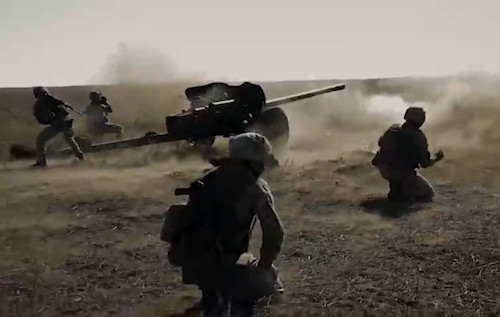
The Ukrainian armed forces, on the other hand, should by now have reached, between regular forces and territorial militias, the 200-250.000 units deployed throughout the national territory, naturally with a greater concentration in the areas in contact with the Russian ones where it is assumed that about 150.000 soldiers are employed. and militiamen (not all of which can be used in high-intensity combat).
From these numbers we can therefore deduce a strength ratio that is only currently 1: 1 while at the beginning of the conflict, given the excessive length of the front, it was probably unfavorable to the Russian attacking forces whose air and qualitative superiority of some of the equipment does not seem moreover, it was decisive. In fact, if we examine what in the war schools is defined "space ratio", it turns out that at the beginning of the operation, with the available number of BTGs, which theoretically could have covered about 600 (maximum 900) km. on the front, the Russians instead had to attack the Ukrainians on an unsustainable extent as it was almost double what is foreseen by the doctrine.
Hence, in addition to other factors such as excellent performance of the Ukrainian army (trained cadres, motivated soldiers, prepared plans) and the help that proved to be fundamental from the Western part (in particular the alleged "assistance" tointelligence Ukraine, anti-tank weapons and modern and effective anti-aircraft weapon systems), the failure to achieve all the initial objectives desired by the leadership Russian.
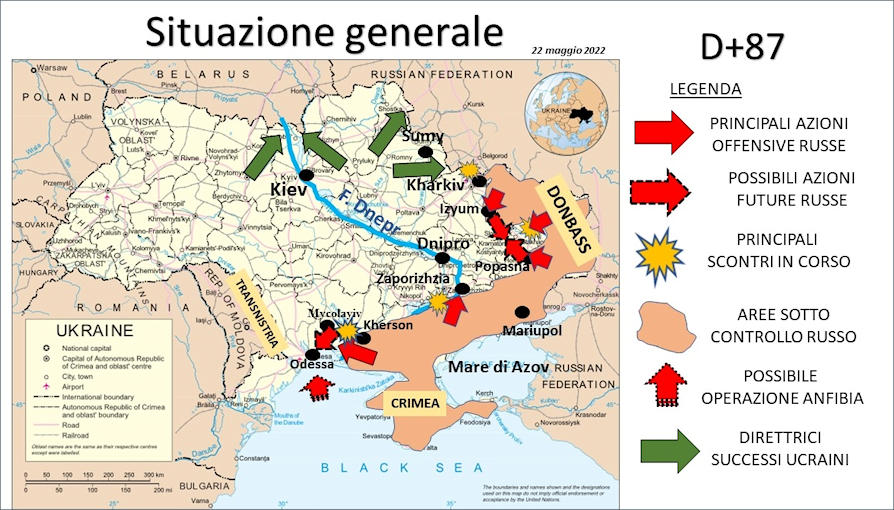
The second phase of Russian operations
The first phase of the "generalized" attack that involved almost half of the entire Ukrainian land border, partially unsuccessful, was followed by the current phase that sees the Russians fighting on a much narrower front to the south-east and south. But the news coming from the contact line tells us of an advance which, although with local successes, continues to be relatively slow.
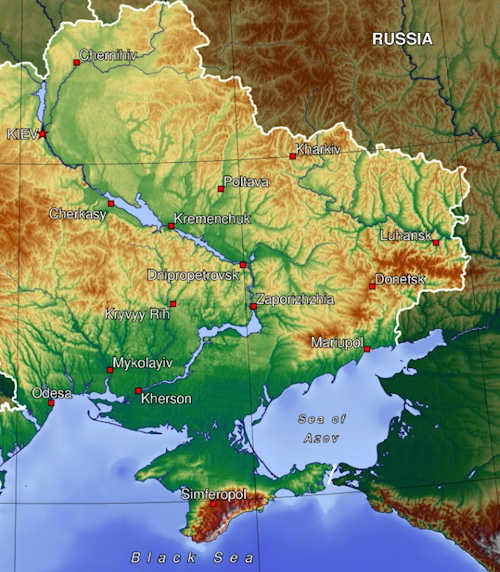
Many commentators believe that even in this second phase the Russian offensive has reached the culminating point (climax), that is, a situation in which it would no longer be able to operate having put all its war potential into combat without having completed the mission.
Is it really so? Probably not. It must be borne in mind that we are facing a conflict that at least initially had a symmetrical nature, understood as a confrontation between conventional forces of almost similar quality and consistency and which, thanks to Western aid, will still continue to be such. It is true that even in this quadrant the Russian troops have suffered heavy losses such as in the attempt to force the Siverskyi Donets river, but it must be pointed out that in addition to the effective resistance of the Ukrainians who, let us not forget, know very well the 'area having operated in the last eight years against Russian-speaking separatists, the offensive of the Russian and pro-Russian forces is negatively affected by orography, hydrography and anthropogenic presence that do not allow easy maneuvering, a maneuver that thanks to some important local successes only now seems start producing positive results especially in Izyum, Popasna and Severodonetsk itself.
Furthermore, the Russians can now count not only on the forces recovered and already put back into combat from the no longer operational lines of the north (Kiev) and the north east (Sumy), but also on the approximately 10 BTGs that were engaged in Mariupol. The latter, after an adequate reconditioning, will be able to go to strengthen the gravitation exerted on Severodonetsk by giving the decisive shoulder to the Ukrainian forces in defense or to go and re-establish a front line that in Kherson-Mykolayiv continues to present many problems.
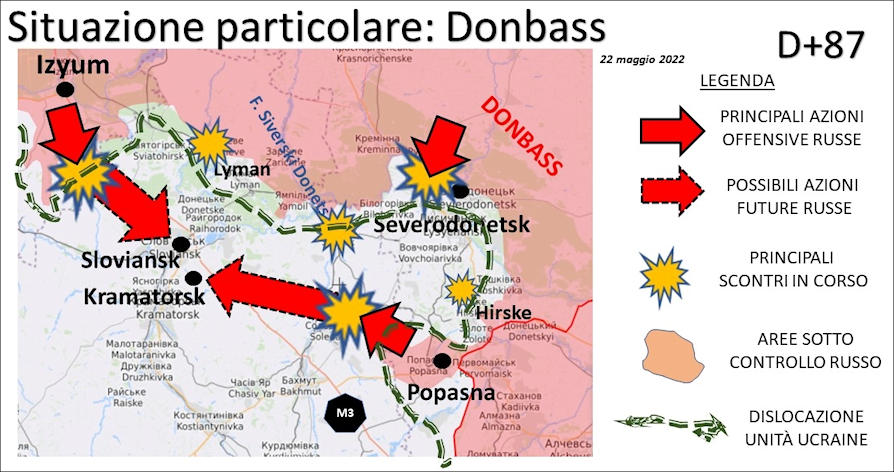
However, the main effort at this stage seems to be precisely that in Donbass where the Russian BTGs, as mentioned, operate in the areas of Izyum (to break south-east towards Slovyansk) and Popasna (to reach Severodonetsk north-west and Kramatorsk north-west. ), in order to take control of the M3 motorway (E-40). This encirclement maneuver would close in a pocket the Ukrainian departments (probably about twenty BTG) engaged in the salient of Izyum-Lyman-Severodonetsk-Hirske-Popasna.
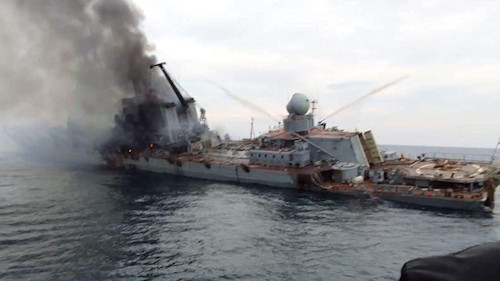
If the encirclement maneuver between Izyum and Popasna were to be successful, a decisive point of the line of operation whose objective is the conquest of the entire Donbass would undoubtedly be reached and passed.
Also in the south, after 84 days of resistance in the local steel mills, which have now become a pile of rubble, Mariupol has been definitively conquered. The Russians and the Donbass militias, in addition to having freed up forces that could be used elsewhere, have thus ensured that continuum territorial with the Crimean peninsula which has great symbolic as well as economic value. Furthermore, while the effort continues north to reach the important city of Zaporizhzia, in the north-west of the peninsula, fighting continues along the Kherson - Mykolayiv line with mixed results since the beginning of the conflict.
Failure to fully acquire this area, in addition to the losses of the missile cruiser Moscow (photo) and some amphibious ships, is one of the reasons why the Russians have not yet managed to attack Odessa, another symbolic city of Ukraine and a "door to break through" to connect Russia to Transnistria, a Moldovan region that has also declared itself it is autonomous and in 2014 it asked to join what they consider their "motherland".
In summary, by focusing attention on the southern "oblasts" of Ukraine, the Russians finally intend to use their units in a more consonant and responsive way to the basic principles of military doctrine, at least as regards the right balance of forces and space. The front is now of such length that it can be hit more effectively by the available BTGs.
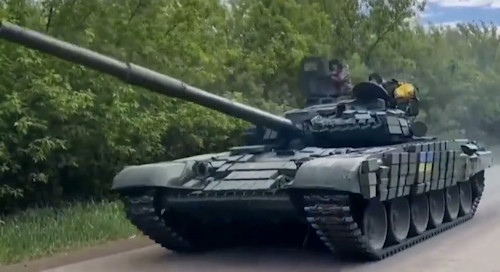 The Russians have certainly suffered considerable losses, but the Ukrainians have seen their battleship and air components almost completely destroyed and a substantial part of their territory falling into Russian hands.
The Russians have certainly suffered considerable losses, but the Ukrainians have seen their battleship and air components almost completely destroyed and a substantial part of their territory falling into Russian hands.
Only the aforementioned Western military aid, including the Polish T-72 tanks (photo), and their huge motivation, allowed the Ukrainians to continue to implement a rather effective defense that could eventually lead to a conflict of friction and therefore long lasting.
Here it is that for the Russians it may be necessary to go to phase 2.1, that is to win in Donbass and in the Odessa area in the shortest possible time using deadly new means.
"Terminator ”in action
For these reasons, in addition to an even more massive use of the best weapon systems such as the high-precision Khinzal air-to-ground and Iskander ground-to-ground hypersonic missiles with ranges of 2.000 and 500 km respectively. or the deadly TOS-1 (Buratino), systems mounted on T-72 tank frames capable of launching missiles with thermobaric warheads, some believe that other very modern Russian weapon systems are about to appear on the battlefield that for a series of reasons, first of all precisely because they have recently come off the assembly lines, have not yet been used.
Here are some of these new means, limiting ourselves to those operating in the terrestrial environment which has so far been the bloodiest one and which will be decisive for the fate of the conflict.
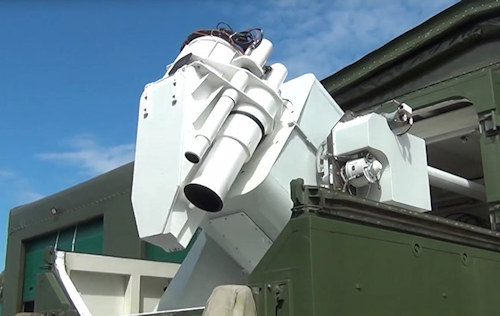 As mentioned, the ability to acquire information on the entity, location, nature and attitude of the enemy is fundamental. To do this, the Ukrainians also have drones (some of which probably provided by the nations that are contributing to its defense) against which it seems that in recent days the Russians have used a laser weapon system. Zadira (photo), which according to Russian Deputy Prime Minister Yuri Borisov is "capable of incinerating a drone but also other vehicles 5 km away".
As mentioned, the ability to acquire information on the entity, location, nature and attitude of the enemy is fundamental. To do this, the Ukrainians also have drones (some of which probably provided by the nations that are contributing to its defense) against which it seems that in recent days the Russians have used a laser weapon system. Zadira (photo), which according to Russian Deputy Prime Minister Yuri Borisov is "capable of incinerating a drone but also other vehicles 5 km away".
With regard to the more "conventional" means, since the beginning of the operations the Russians have used the T-72B3M tanks and those of the T-80 and T-90 series, which are equipped with ERA protection systems (Explosive Reactive Armor, i.e. explosive reactive armor) of the Kontakt-5 and Relikt type, considered very advanced until February but which were not sufficiently suitable to face the new threats of the fearsome western anti-tank missiles, for example the Javelins.
This is why Russia could send the mammoths to Ukraine (compared to the standards of vehicles produced in the East so far) T-14 Army, vehicles with characteristics similar to those of western tanks both in terms of size and extended use of electronics but which would have the capacity to fire up to ten 125 mm rounds. per minute and hit targets at a distance of seven kilometers.
To give an idea of how powerful the latest Russian-born is, the US M1 Abrams tank can fire "only" three rounds per minute and has a range of "just" 4.500 meters. In addition, the new tank features Malachit reactive armor and an Afganit active protection system that includes millimeter-wave radar to detect, monitor and intercept incoming anti-tank ammunition similar to the state-of-the-art Israeli system. trophy.
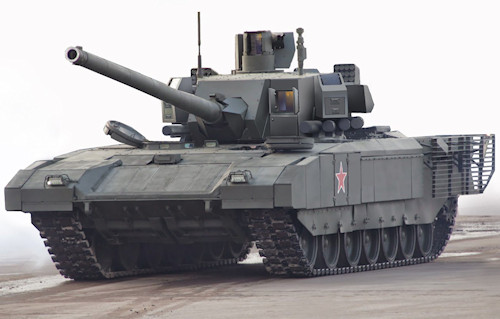
By MBT (Main Battle Tank) T-14 (photo), which had a troubled genesis to say the least because of its complexity and very high development and production costs, there are currently relatively few (some dozen) available in the availability of one of the leading divisions of the Russian army, the 2nd Division of the “Tamanskaya” Guard. The question is whether the Russians will trust to enter into combat a vehicle that is certainly mobile, protected and powerful but probably not yet mature as it has not been sufficiently tested.
The new infantry fighting vehicle could also appear on the battlefields of Ukraine alongside the T-14. Having the same platform, it has the same name, Armata, but with a different identification code: T-15. The Russian infantrymen, who have suffered heavy losses following the destruction of poorly protected vehicles such as the BMP-2 and 3, are looking forward to receiving them but it will not be that simple. As with the T-14s, a few dozen units would be available at the moment. Also this vehicle, moreover, could have the same "maturity" problems as the older brother T-14.
Another deadly vehicle that has already been deployed in the middle of May 2022 in Donbass is the BMPT Terminator-2, a vehicle suitable for supporting tanks in particular in built-up areas as it has a composite weapon set: a machine gun cal. 7,62 and two anti-personnel grenade launchers, two 30mm guns against armored vehicles and 4 guided missile launchers against tanks. The model that is already used is on a T-72 hull, therefore dating back to the Soviet era although improved. A new model much more protected, more automated and also with anti-aircraft capability is the BMPT-15 Terminator-3, a weapon system on the hull of the aforementioned Army.
Thanks to the availability of these means, the Russians could set up some very modern BTGs with which to give the last push to the Ukrainian resistance in Donbass and Odessa.
Luigi Chiapperini
General of the Army Corps of the Lagoon Luigi Chiapperini, former planner in the NATO Kosovo Force command, commander of the NATO national contingents in Kosovo in 2001 and UN in Lebanon in 2006 and of the multinational NATO contingent in Afghanistan between 2012 and 2013, deputy Head of the General Planning and Strategic / Political Direction Department of the Alliances at the Defense Staff, Head of the General Office of the Chief of Staff of the Italian Army, he is currently a member of the Army Study Center and collaborator of the CIELS University Campus in Padua.
Photo: MoD Russian Federation / web / Twitter

